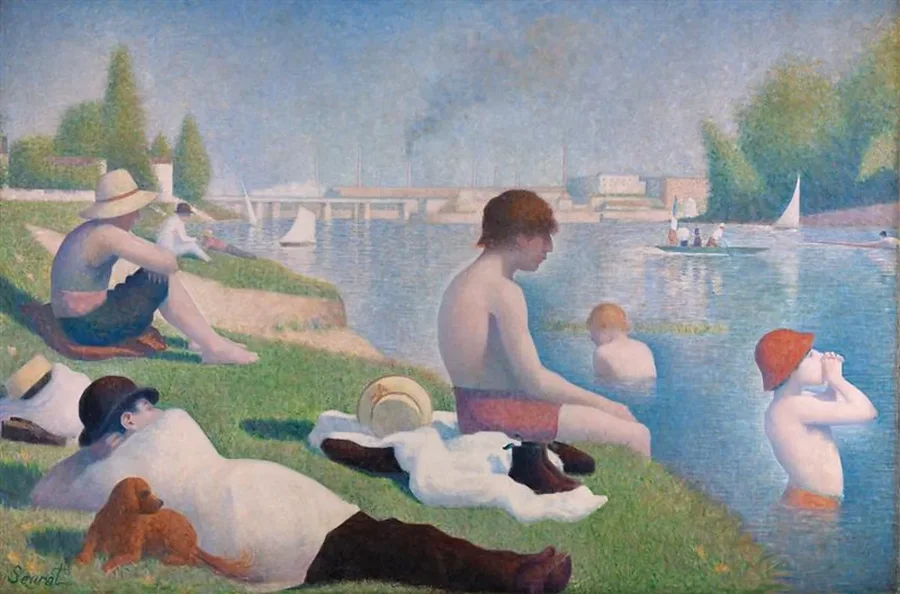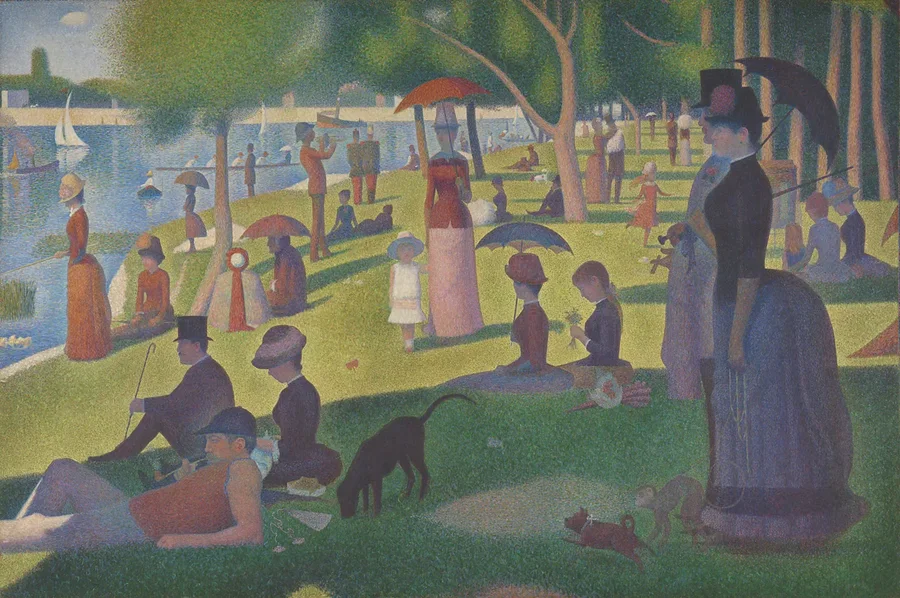Georges Seurat's once-mocked painting, Bathers at Asnières, is both "a magnificent distillation of the essence of wine" and "a modern marvel in the art of seeing."
At first glance, the monumental 2x3-meter painting seems like a hymn to the soft summer light and the respite of factory workers on the banks of the Seine. But a closer look reveals that their calm and strong bodies melt into a network of pure colors and lights, making them simultaneously heavy and light.

For Seurat, light is not simply illumination, but a substance that must be dismantled and rebuilt. The painting thus becomes an analysis of the illusions of appearance, stripping away the social and psychological “curtains” that shape our perception.

The key to the meaning lies in a detail near the center of the painting: a factory chimney smoking over the shoulders of the main figure. This chimney belongs to a factory in Clichy, an area known for candle production in the 19th century, an industry made possible by the discoveries of the French chemist Michel Eugène Chevreul. In addition to isolating stearic acid for unscented candles, Chevreul formulated the theory of color contrast, on which Seurat built every inch of his work.
Trained at the École des Beaux-Arts, Seurat was introduced to Chevreul's ideas, published in 1839, which proved that complementary colours placed next to each other become more vivid and luminous. This scientific discovery sparked, literally and figuratively, a whole new way of seeing — and made Bathers at Asnières a visual manifesto as powerful today as it was in its time./BBC






















